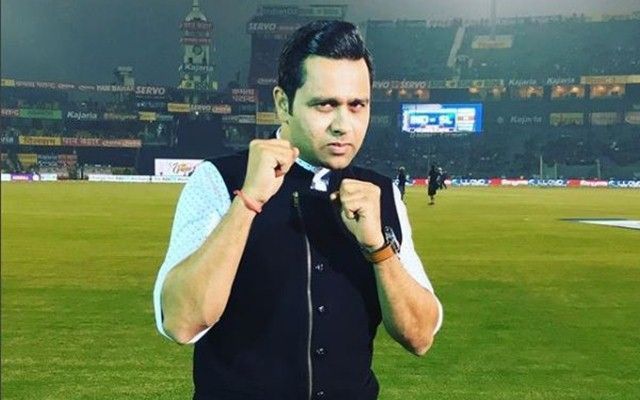
Before Aakash Chopra became a commentator, he was an invaluable member of the Indian Test team
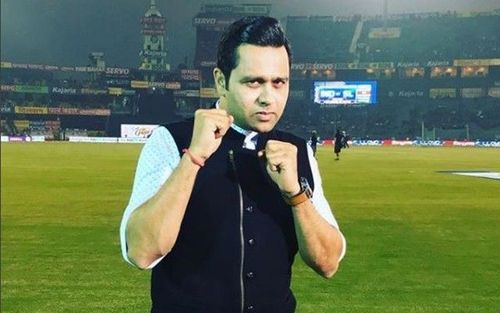
Aakash Chopra is the face of Hindi commentary on Star Sports, and is a twitter icon. His in-depth analysis of the most minute aspects of the game has earned him the sobriquet of Aakash 'Gameplan' Chopra.
Chopra has become a craze among the Twitterati, with his opinions on wide-ranging topics, not only restricted to cricket. But before jumping into the commentary bandwagon, Chopra was an accomplished opening batsman for Team India.
Aakash Chopra - The Test Opener
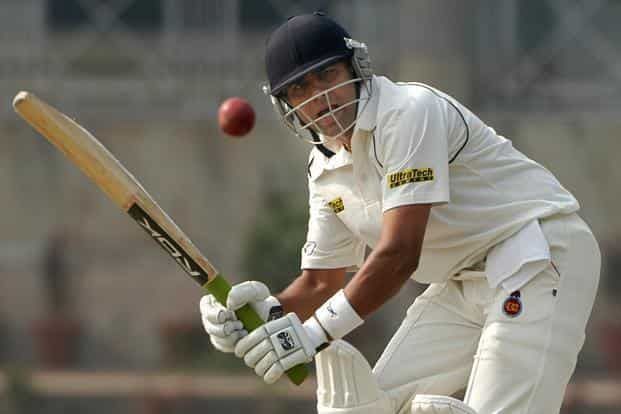
The Delhi opening batsman represented India in 10 Test matches. Although he had a short Test career, it was not bereft of glory moments. Chopra made his Test debut against New Zealand in Ahmedabad in October 2003, and gave a decent account of himself, contributing 73 runs in the two innings.
The Delhi player's best performance in the series came in the second Test where he scored 60 and 52 runs in the two innings, the only two fifties of his Test career. The fifty in the second innings was of particular importance as it helped India save the Test after the hosts were asked to follow-on.
Chopra's greatest contribution, however, came in his second Test series, during India's tour of Australia in 2003-04. In a batting line-up filled with some of the greatest names in Indian cricket, Chopra diligently performed his role as an opening batsman, almost to perfection.
Although he did not have any big scores to his credit, Chopra invariably occupied the crease for long periods, thereby neutralising the effect of the new ball. He formed a stable opening partnership with the dynamic Virender Sehwag during the series. The pair added at least 50 runs in the 1st innings of all the 4 Test matches in that tour. Chopra's contribution went a long way in ensuring that India dominated the almost invincible Aussies for large swathes of the drawn Test series.
Unfortunately, the gritty opener could not capitalise on any of his good starts. A disappointing Pakistan tour followed by a disastrous home test series against Australia put paid to his ambitions of a prolonged run with the Indian Test team.
On that note, let us have a look at Aakash Chopra's contributions in the momentous tour of Australia in 2003-04.
India vs Australia - 1st Test in Brisbane, 4th to 8th December, 2003
.
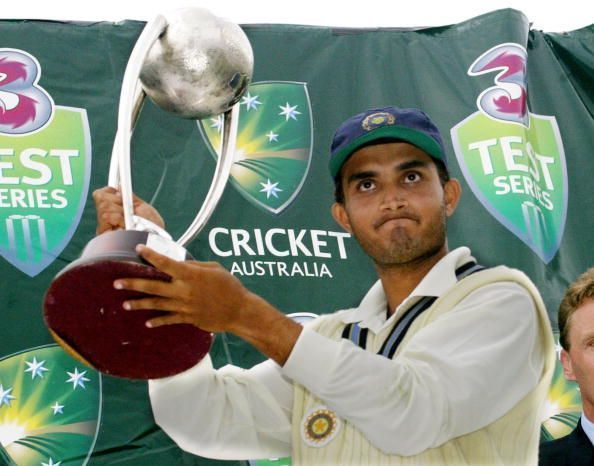
The 1st Test of the series was played in Brisbane, one of the liveliest pitches in Australia. The Indian captain Sourav Ganguly won the toss, and elected to field. Australia managed to score 323 runs in the first innings on the back of Justin Langer's knock of 121 runs. Zaheer Khan was the star performer for India with the ball, bagging 5 wickets for 95 runs.
Chopra and Sehwag put together a 61-run stand for the 1st wicket to ease the nerves in the visiting dressing room. But Australia struck back by claiming 3 quick wickets - Sehwag, Dravid, and Tendulkar, for the addition of just one run, reducing India to 62/3. Chopra and Ganguly then went about the repair job by adding 65 runs for the 4th wicket, before the former was dismissed with the team score on 127. Although Chopra's contribution was only 36 runs, the more important factor of his innings was the 135 deliveries he faced to blunt the Australian attack, and get India out of a precarious situation.
The Indian captain carried on the good work, taking the attack to the Australians in the company of VVS Laxman. The duo added 145 runs in quick time to put the pressure back on the Aussies. Ganguly's 144 and Laxman's 75, along with handy contributions from the lower order helped India score 409.
Although the Test petered out to a draw, the Indian team showed the Aussies that they were in for a fight. Ganguly deservedly won the Man of the Match award, but Chopra played a significant role in getting the team out of troubled waters by successfully weathering the early storm.
India vs Australia - 2nd Test in Adelaide, 12th to 16th December, 2003
.
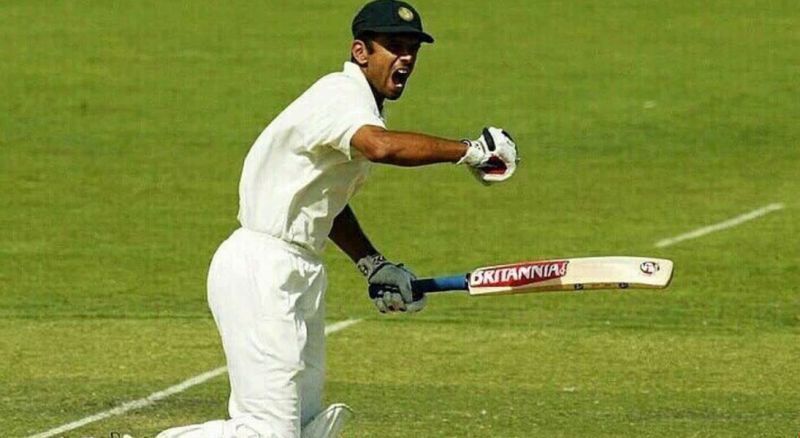
The second Test of the series was played in Adelaide which is one of the most batting friendly grounds in Australia. The Australian captain Steve Waugh won the toss, and unsurprisingly elected to bat first. The home batsmen made the best use of the conditions to amass a first innings score of 556, Ricky Ponting emerging as the top-scorer with 242 runs. Although Anil Kumble accounted for 5 wickets, they came at the cost of 154 runs.
Chasing a mammoth first innings score, Chopra and Sehwag again gave India a solid start by adding 66 runs for the 1st wicket, with the former contributing 27 runs. Like in the 1st Test, there was a flurry of wickets after the fall of the 1st wicket, as India were reduced to 85/4. It was then the turn of Rahul Dravid and Laxman to send the Aussie fielders on a leather hunt, akin to their monumental partnership in Kolkata a few years ago. Dravid (233) and Laxman (148) added 303 runs for the 5th wicket to help India put up 523, to concede a modest 33-run deficit.
Ajit Agarkar then came up with the best spell of his Test career to skittle Australia out for 196 runs in the second innings. His spell of 6/42 destroyed the Aussie batting line-up, leaving India a fourth-innings target of 230. Chopra made a small contribution in this Aussie demolition as he took a blinder at gully to dismiss the dangerous and in-form Ponting for a duck.
Chasing 230 in the last innings was never going to be an easy task, but Chopra and Sehwag once again provided India a solid start by putting 48 runs for the first wicket. Although Chopra contributed only 20 runs, his partnership with Sehwag eased the pressure in the dressing room. Dravid continued his stupendous form in the 2nd innings as well, and took India to victory by slamming an unbeaten 72. He was ably assisted by neat contributions from Tendulkar and Laxman, as India romped home with 4 wickets to spare.
Dravid was unquestionably the Man of the Match for his outstanding batting performances in both innings. But Chopra had also proved his worth with gritty batting performances in both innings that helped India register a memorable Test win away from home.
India vs Australia - 3rd Test in Melbourne, 26th to 30th December, 2003
.
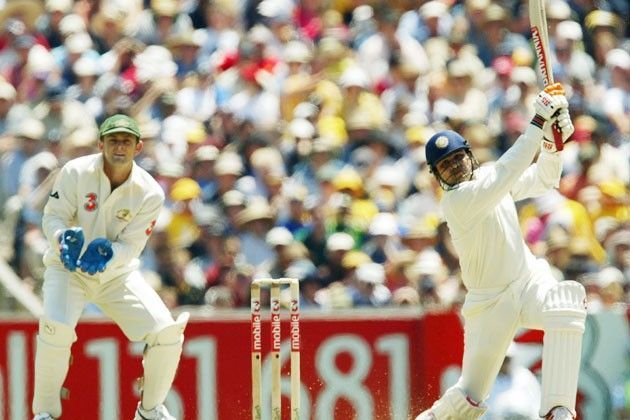
The third Test of the series was played in Melbourne on Boxing day. Ganguly won the toss and elected to bat. It seemed a good toss to win, as Sehwag smashed the Aussie bowlers to all corners of the ground. Chopra proved a perfect ally for him at the other end, as the duo blunted the Aussie attack in an opening partnership that yielded 141 runs. Although Chopra was dismissed for 48, missing his fifty by a couple of runs, he had resisted the Australians for 138 deliveries.
Sehwag continued his blitzkrieg even after the departure of Chopra before he was caught at log-on for 195, in an attempt to reach his double century with a six. Unfortunately, the other Indian batsmen could not make substantial contributions as India folded up for 366 in their first innings.
In reply, Mathew Hayden and Ricky Ponting took the Indian attack to the cleaners. The pair added 234 runs for the second wicket, with the Tasmanian smashing another double century (257), and Hayden contributing 136. This helped the Aussies compile a massive 558 runs in their first innings. Kumble was again the star performer with the ball, dismissing 6 Aussie batsmen, but conceding 176 runs in the bargain.
Trailing by 192 runs, India were off to a disastrous start losing both Chopra and Sehwag cheaply. Although Dravid (92) and Ganguly (73) resisted for a while, the Indian batsmen buckled under the sustained pressure from the Aussie attack, to be dismissed for 286 runs. Australia achieved the target of 95 runs for the loss of just one wicket to draw level in the 4-match series.
India vs Australia - 4th Test in Sydney, 2nd to 6th January 2004
.
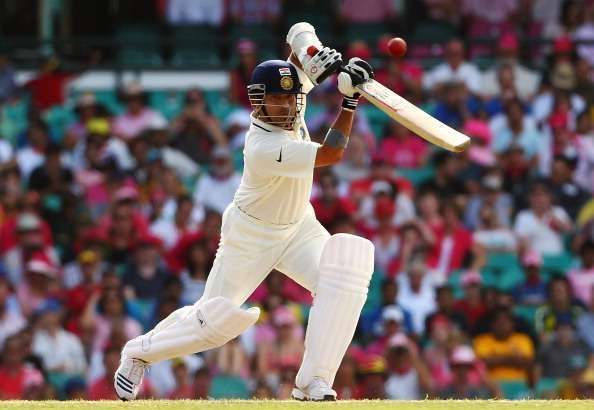
The final Test of the series was played in Sydney, the most spin-friendly ground in Australia. With the series on the line, Ganguly won the toss and elected to bat first. Chopra (45) and Sehwag (72) again gave India an ideal platform, by stitching together another century partnership. The duo added 123 runs before both fell in quick succession.
After Dravid was dismissed for 38, the pair of Sachin Tendulkar and Laxman took centre-stage. Tendulkar, who had a rather underwhelming tour till that point, played an innings of extreme patience and self-denial. He eliminated the cover drive, a shot that had led to his dismissal on a few occasions in the series, from his array of strokes, and instead concentrated on accumulating runs predominantly through the leg-side. Laxman, on the other hand, was at his sublime best, caressing the ball to the boundary with consummate ease.
The duo added a whopping 353 runs, with Laxman contributing a pleasing 178, and Tendulkar remaining unbeaten on 241. Ganguly declared the Indian innings at a massive score of 705 runs for the loss of 7 wickets.
Australia managed a score of 474 runs in their first innings, with Justin Langer and Simon Katich scoring centuries. Kumble was again the wrecker-in-chief, claiming 8 wickets for 141 runs. Although India had a 231-run lead, Ganguly opted not to enforce the follow-on, and instead go for quick runs to make the Aussies bat last in the fourth innings on a deteriorating pitch.
India batted aggressively in their second innings to post a total of 211 for 2 declared in 43.2 overs. Dravid (91*) and Tendulkar (60*) were the principal contributors with the bat. This left the Aussies to chase an unlikely target of 443 runs for victory or bat out a little more than a day to save the Test match and the series.
The visitors went for the kill on the final day, and managed to reduce Australia to 196/4 at one stage. But Steve Waugh, playing his farewell Test match, and Katich held fort to stitch together a 142 run partnership. Although Waugh was eventually dismissed for 80, the duo had already taken Australia to safety by then.
Tendulkar was declared the Man of the Match for his double century. Although the series ended in a draw, India had given the irrepressible Aussies a good run for their money. The dogged Akash Chopra had also made a small but telling contribution in one of the most defining away Test series in Indian cricketing history.